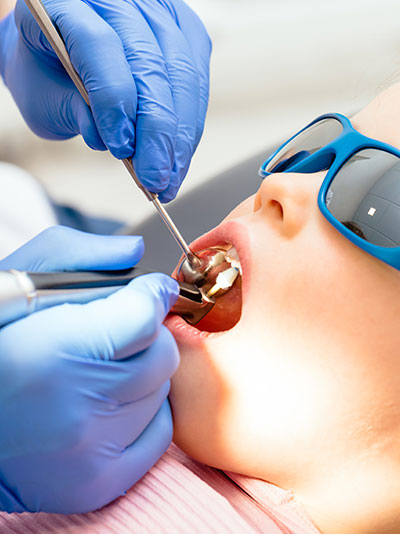Laser dental fillings use a laser to remove decayed tooth tissue and prepare the tooth for a filling, offering a potentially less invasive and more precise process compared to traditional methods, often with minimal pain and reduced need for anesthesia.
How it works:
- Laser Removal of Decay: Dental lasers emit a focused beam of light that precisely targets and removes decayed tooth tissue, often with minimal impact on surrounding healthy tissue.
- Preparation for Filling: The laser can also prepare the tooth's dentin and enamel, creating a better surface for bonding the filling material, which can lead to a stronger, longer-lasting restoration.
- Reduced Pain and Discomfort: Because lasers can remove decay with precision and minimal tissue disturbance, they often require less or no anesthesia, leading to a more comfortable experience for the patient.
- Faster Procedure: Laser dentistry can sometimes be faster than traditional methods, as the laser can quickly and efficiently remove decay and prepare the tooth for the filling.
- Reduced Bleeding and Swelling: Laser procedures often result in less bleeding and swelling compared to traditional dental procedures.
- Bacteria Destruction: Lasers can help destroy bacteria in the cavity, which can help prevent further decay.

